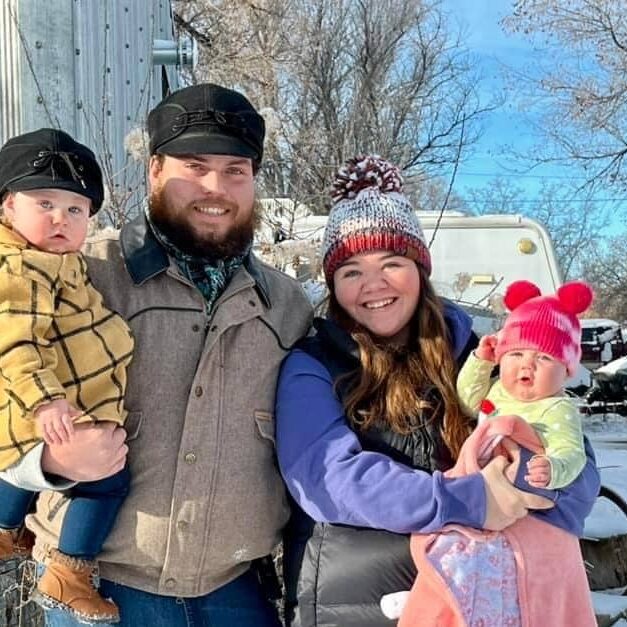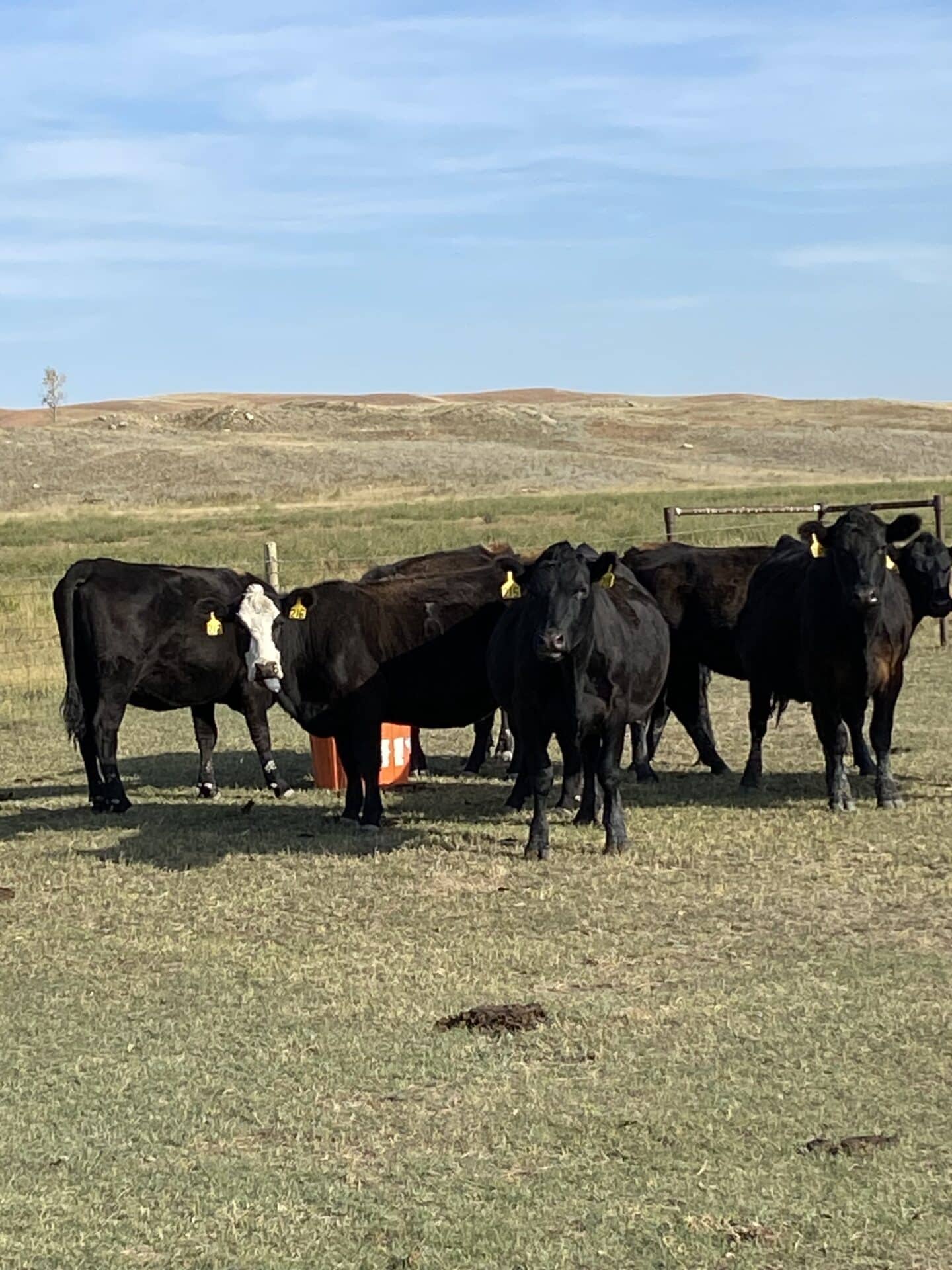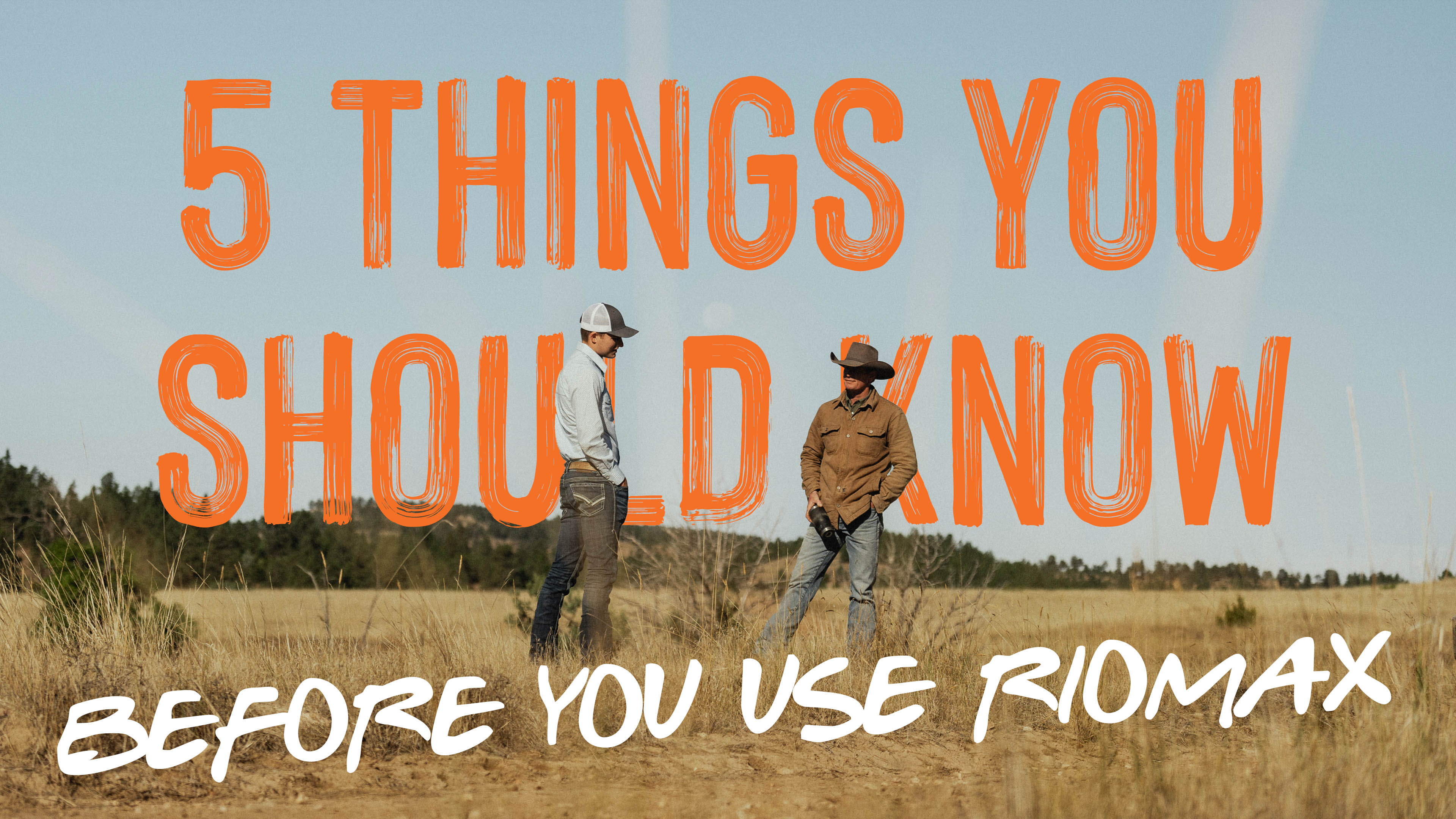Last updated on November 4th, 2024 at 01:15 pm
finding a place in ranching
Here’s How Riomax is helping a young ranch hand realize his dreams
danny vanmaanen, jr.

Bainville, Montana
The generational legacy of ranching is part and parcel of the beef industry’s DNA. Yet, keeping a family ranch afloat is tough, no matter where it’s located.
It’s even tougher for a young person who’s not from a ranching family to rise from the ranks of ranch hand to ranch owner.
But that’s Danny VanMaanen, Jr.’s goal. With a burning passion for ranching, a young family to consider, and the future ahead of him, don’t bet against the value of grit, determination, hard work, and a willingness to learn.
He grew up in Middleton, Idaho, as a typical teenager, playing high school sports. He worked in construction after graduation but dreamt about owning a ranch and making an impact in the cattle industry, he says. He found a job at a feedlot near Miles City, Montana, and it was there that his education in cattle began. He worked hard and long, listened and learned, and earned his spurs as a cowboy.
“After learning and doing that, I told myself that I’d like to find a small operation that lines up with where I want to be, so I get the feel of knowing exactly what needs to be done on a daily basis,” he recalls. “It ended up that I needed a place and it all lined up just right.”
His faith in God took him and his growing family to Bainville, Montana, a small town in far northeastern Montana close to both North Dakota and Canada, and the Granley Ranch, owned by Dave Granley. It’s a 300-head commercial cow-calf and farming outfit.
While VanMaanen didn’t grow up on a farm or ranch, he comes by his passion naturally. His great grandfather farmed in northeast Montana on a place his great-great grandfather homesteaded. With frequent visits to the farm, he fell in love with the northern High Plains prairie, it’s rolling vistas and wide-open sky. “I always planned on being in that part of the country.”
The Granley Ranch mainly runs Angus cows and breeds to Charolais and Angus bulls, “and we AI some to Hereford bulls,” VanMaanen says. The cows are moderate frame, low input cattle, fit for the northern climate they live in.

The rolling northern prairie pastures consist of native grass, and in addition, some grazing comes from former Conservation Reserve Program (CRP) acres. The farming operation grows feed for wintering the cows and backgrounding some of the calves.
The pairs are rotated through the pastures, but there’s no set rotational schedule. With eyes close to the ground evaluating pasture conditions, they change pastures when the grass tells them it’s time to move.

Yearling heifers start calving from the 15th to the end of March and the mature cows start the first to second week of April. “And then we turn our bulls out at the end of June.”
Weaning begins typically the second week of November and the heavy end of the calves are sold through their local sale barn. “The replacement heifers and lighter end of the calf crop come to our feedyard for backgrounding. Around 150 head is what we’ve been doing the last couple of years, between the replacements and the light calves,” he says.
In addition to an animal health protocol, the calves are fed a total mixed ration (TMR) that consists of corn silage, grass and alfalfa hay, and pea flour for the grain component. In all, it’s a small ranch with one foot in the traditions of ranching and the other facing forward, involving marketing and production alternatives to improve the bottom line.
The Riomax Fit
Part of the forward-facing aspect of the Granley Ranch is looking at the advantage of switching to orange Riomax tubs as their vitamin and mineral supplement. They started in January of 2024 with a trial with their light steers and replacement heifers. “Then we started the first calf heifers on it in April right as they got done calving,” he says.
“One thing I noticed is they didn’t need to be moved (to a new pasture) as often. There seemed to still be grass left when we moved them.” In fact, they were able to rotate back to some pastures because of the amount of forage left behind.
They saw the same feed savings after putting out the tubs in January. “We were able to save almost 1,400 to 1,500 pounds of feed every two days that they just wouldn’t eat,” he says. Beyond that, they eliminated feeding free-choice hay. “That was two bales every three, four days.”
The ranch saw additional benefits in calf health. There was a difference in the level of scours, with the Riomax calves showing better health. Likewise with coccidiosis that ran through the calves after weaning. “And once we started Rio, within two, three weeks, I quit doctoring for anything, really.” Beyond that, “The calves seemed a little bit more spunky. He’s never had wild cows, but they seem to be way more content.”

If the proof of a good cook is in the pudding, the proof for Riomax is in the manure. “When it comes to manure samples, I’ve done quite a few of those the past few months,” he says. “From our cows that are not on Rio to the cows that are on Rio, there’s a 20% to 28% difference in the amount of grass left in the manure from one bunch to another.”

In fact, VanMaanen is a new Riomax dealer, working through Spring Creek Supply in Baker, Montana. It was an opportunity that came his way more than anything on his part. “But I like the product. It’s been what they say it’s going to be.”
He has a couple customers at the moment and has had good feedback. “One guy said if the fly control didn’t work, he wouldn’t be back. Within 10 days, he went from having flies to not having many flies, and I mean little to nothing.” The same thing happened about that fast when the Granley Ranch switched from the original Riomax 360 tubs to the 360 Repel tubs.
Beyond that, he says the people at Riomax are great to work with. “They take care of you,” he says.
VanMaanen’s eyes are fixed firmly on the future while his feet are standing firmly on the ground, doing his part to help the Granley Ranch succeed while raising a family with his wife, Gabrielle and their three children—daughters Karsyn and Emersyn and son Wyatt
His experience in the cattle business has taught him a lot. Looking at it from 30,000 feet, he says being a good rancher is about good management. “Trying to always do better. Be a steward of the land and try to improve it for the next generation.”
His long-term goal is to own an operation that’s self-sustaining and can make him and his family a living. He knows, with land prices, interest rates and other factors, the odds are stacked against him. But he’s not deterred.
“I want to try to impact the cattle industry in this area and see the change for the better. Watch these little communities in this area get better because they are dying. And figure out how somebody who doesn’t inherit a ranch get started.”
Don’t bet against him.




